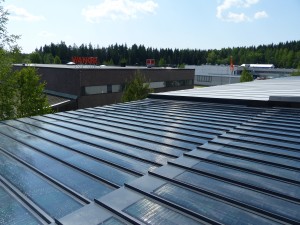The amount of electricity generated using solar panels stands to expand as much as sixfold by 2030 as the cost of production falls below competing natural gas and coal-fired plants, according to the International Renewable Energy Agency.
Solar plants using photovoltaic technology could account for 8 percent to 13 percent of global electricity produced in 2030, compared with 1.2 percent at the end of last year, the Abu Dhabi-based industry group said in a report Wednesday. The avera ge cost of electricity from a photovoltaic system is forecast to plunge as much as 59 percent by 2025, making solar the cheapest form of power generation “in an increasing number of cases,” it said.
ge cost of electricity from a photovoltaic system is forecast to plunge as much as 59 percent by 2025, making solar the cheapest form of power generation “in an increasing number of cases,” it said.
 ge cost of electricity from a photovoltaic system is forecast to plunge as much as 59 percent by 2025, making solar the cheapest form of power generation “in an increasing number of cases,” it said.
ge cost of electricity from a photovoltaic system is forecast to plunge as much as 59 percent by 2025, making solar the cheapest form of power generation “in an increasing number of cases,” it said.Renewables are replacing nuclear energy and curbing electricity production from gas and coal in developed areas such as Europe and the U.S., according to Bloomberg New Energy Finance. California’s PG&E Corp. is proposing to close two nuclear reactors as wind and solar costs decline. Even as supply gluts depress coal and gas prices, solar and wind technologies will be the cheapest ways to produce electricity in most parts of the world in the 2030s, New Energy Finance said in a report this month.
“The renewable energy transition is well underway, with solar playing a key role,” Irena Director General Adnan Amin said in a statement. “Cost reductions, in combination with other enabling factors, can create a dramatic expansion of solar power globally.”
Recommended Posts





